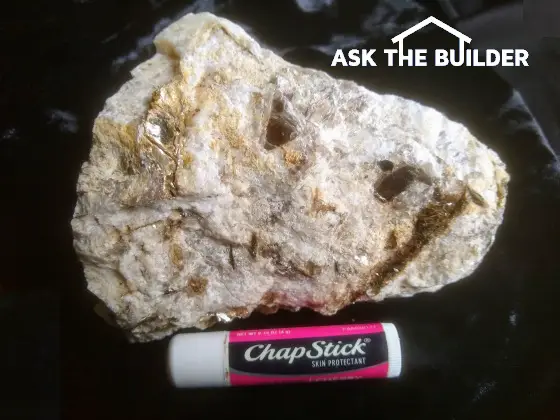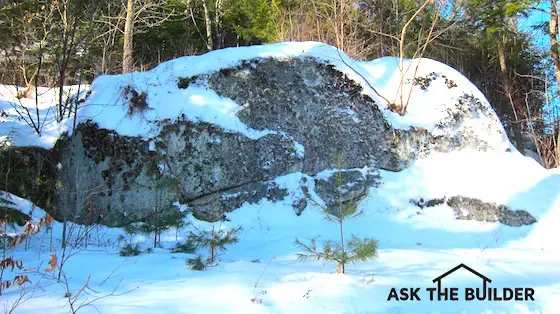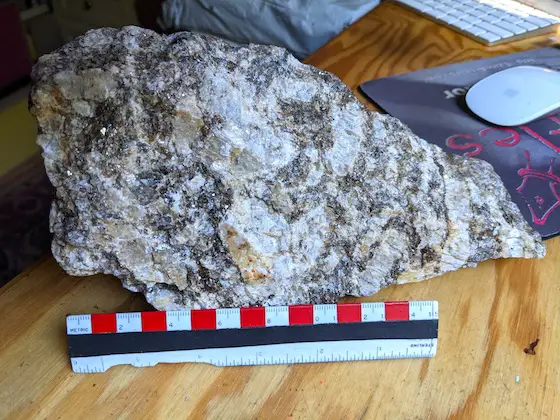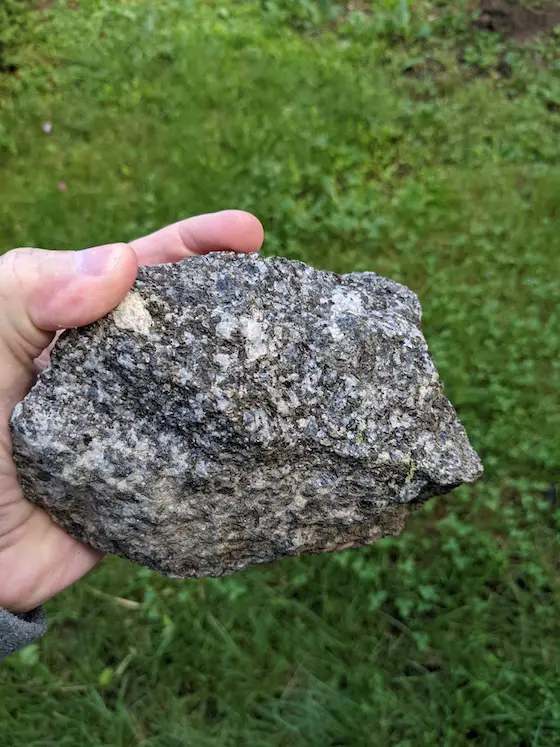Meredith Porphyritic Granite

This is but one sample of the Meredith Porphyritic Granite (Mpg). Look below at another one that really shows off the giant phenocrysts of orthoclase feldspar. Photo credit: Tim Carter
Meredith Porphyritic Granite - Most Beautiful Rock in New England
The Meredith Porphyritic Granite can be found in and around Meredith, New Hampshire. I happen to live directly on top of this massive pluton and my college degree is in geology. Some references to this geologic rock formation in the older literature refer to it as the Kinsman granite.

This is the Meredith Porphyritic Granite next to my driveway. This is an exposed piece of bedrock that extends miles below the surface of the Earth. Builders and excavators refer to this as a ledge.
When Did This Granite Form?
The granite formed in the Devonian Age about 340-360 million years ago.
How Did the Meredith Porphyritic Granite Form?
The most likely chain of events that created this stunning rock with massive feldspar phenocrysts started with the seafloor being subducted under an old continental plate edge. Keith Heyer Meldahl offers an amazing description of events in his easy-to-read-and-understand book, Rough Hewn Land.
In a nutshell, as the seafloor is subducted under a continent's edge as a result of plate tectonics, about 50-70 miles below the surface of the Earth this thick seafloor plate starts to melt. Seawater is in the rock and some actual liquid seawater under tremendous pressure is pulled down with the seafloor. The presence of seawater lowers the melting point of the rock.
The seafloor starts to melt and giant blobs of this molten rock begin to rise up through the continental crust. Think of these blobs as massive hot-air balloons slowly floating up into the air.
As the blobs slowly rise over millions of years, the chemistry of the rock changes with element substitution. The rock transforms from seafloor sediment and pillow basalt into granite.
The giant phenocrysts in the Meredith Porphyritic Granite attest to how slowly the giant blob, a pluton, rose to the surface. The slower the rock cools and solidifies, the bigger the mineral crystals.
Eventually, through other tectonic events, the pluton makes it to the surface of the earth. A vivid example of plutons, actually a series of them stuck together, is the Sierra Nevada mountains in California.

This is a fantastic sample showing the many minerals within the granite. There are small flecks of mica if you look for them. The ruler markings are centimeters alternating white and red. I added the electrical tape on that ruler in 1972 for my Geology 101 class. As you can see, I still have it 49 years later! (C) Copyright 2021 Tim Carter
What Minerals are in the Meredith Porphyritic Granite?
You'll find the following minerals in the granite:
- large white phenocrysts of orthoclase feldspar
- plagioclase feldspar - dark matrix material
- quartz
- biotite mica
- and muscovite mica
The mineral list was provided by Jay Long in his Stepping Stones Across New Hampshire book.

This is NOT Mpg. It's a different granite. Note how the mineral crystals are so much smaller. You don't see any huge feldspar phenocrysts. There are hundreds of different types of granites that exhibit different colors and mineral sizes. Go visit a shop that sells granite countertops to see!
One Response to Meredith Porphyritic Granite